Graphics that made us say wow now look old
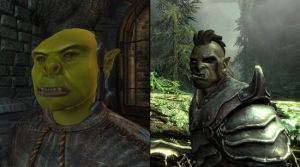
Nostalgia can be a dangerous thing. In these golden ages of gaming, we're often hammered over the head with “throwbacks” to a day where everything was better, for arbitrary reasons. Pixels were better than polygons, minimalism was better than flashy effects and slow controls meant more dedicated motion. It's a trendy tactic to snatch gamers with sentimental value. Still, when actually going back to those original gems that once made us marvel, we can instantly be taken out of that rosy cloud, just by looking at the thing.
Was this game always this, how should we put it, weird?
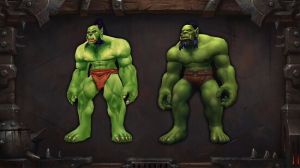
Let's face it; even the best of titles, with the greatest story and most entertaining gameplay, can start to lose some of that sheen after a while. Even worse, it can become downright unplayable, as technology doesn't stand still. Things have moved on; perhaps it's best if we do too. Even if it once made us say 'wow', there are a bunch of games that now look old. In the words of Pet Sematery: Sometimes, dead is better.
Here's a tip: Don't go back and pick up a certain classic. There is nothing but disappointment at the end of that rainbow.
A Rough Start
It might be an abstract concept to a few generations of gamers by now, but when the first consoles were getting installed in homes, “any” graphics were impressive. Games fully made with just text were still an often used tool then. Still, what stood for visuals back then could be a strain on the young mind. There was a ton of imagination needed to make out most of the game's supposed plot.
This phenomenon's most popular example is the Atari 2600. It produced dozens of classics, but a lot of games were also nearly indiscernible, due to mashed up pixels and limited colors just not stacking up. These things were programmed on a maximum size of 4Kb. Imagine what can be stored on that today. Nothing can.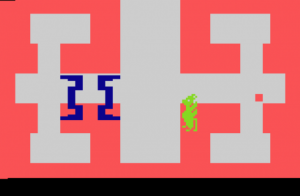
A title called Adventure was just that, but with one large pixel as the character, slaying dragons that looked like seahorses. A roleplaying game (RPG) would be hard-pressed passing that off today. Same goes for Enduro, a racer where wheel grooves had to be severed fully from the model, making the total resemble a centipede-buffalo hybrid. Even with a concept as simple as driving, Enduro is hard to get into it these days, certainly with the limited Atari sound banks.
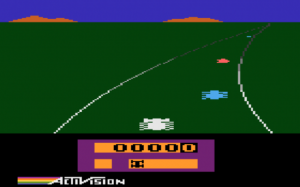
Transitioning to 3D
When consoles mastered the 2D element, games had an overall decent time with the NES and Sega Master System. Sure, there were a few oddballs in the bunch, but the bigger hits were generally sound.
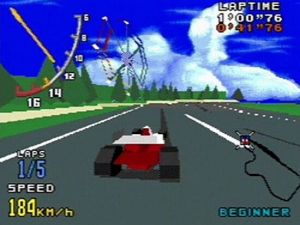
When technology started showing that 3D could be done, however, things started getting dodgy. In its first steps, 3D reverted to nothing more than basic shapes to fit platforms. For instance, Virtua Racing was one of those pioneers and while it was stunning then to see cars in full, now it's comical to display octagonal wheels, at best. It's so bad it's good, but it's still pretty bad.
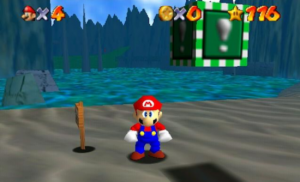
Unfortunately, even that quirky aspect faded with more complex projects later on. Mario 64 took platforming to a whole new level, but a world of repetitive, rough textures just doesn't look the same as it once did. It retains bright colors to help out, but no game can come out today where an area is just one of the same blob over and over. GoldenEye 007 is nearing horror show presentation levels with its square faces, fully gray environments and terrible, flat effects. Any body part is effectively reduced to a crude block. It's hard to take serious anymore.
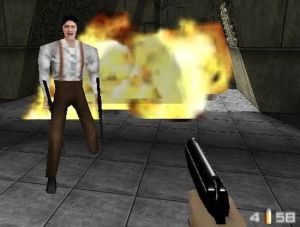
Playstation 1, Do We Remember It Wrong?
Worse yet, an entire generation of Playstation One games and Saturn releases all look dated with their angular 3D shapes. It's tough to imagine anyone liked the first Tomb Raider when it came out, gazing at a robot Lara floating in a brown mess. Not even Metal Gear Solid can save it. Those guys didn't even have faces. People need faces these days.
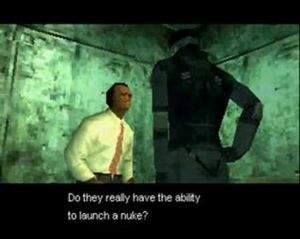
A character sketch of that can be found in the earliest of 3D fighters that released. For instance, the first Tekken has the same issues of body parts resembling segregated blocks tied to each other, more than indicating a person. This is due to the focal points of features being set on characters more and more. There is nothing in Tekken other than its people. If those don't look believable, the entire puzzle falls down.
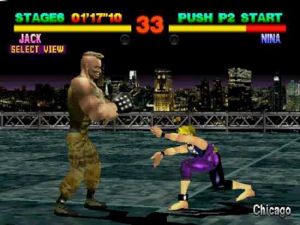
Tomb Raider, Metal Gear, Tekken; all relied heavily on story or gameplay to come from its people and zooming in like that makes flaws more visible. If a person acts realer, it needs to look realer and that, by today's standard, has changed drastically. It's no longer doable to portray a character credibly with a rectangle for a torso and two tubes for legs.
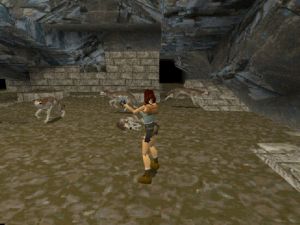
Playstation 2 As The Perfect Control Group
During the PS2 generation, genres found their niche as budgets and popularity rose. Only the first generation releases would still feel its predecessor's flaws.
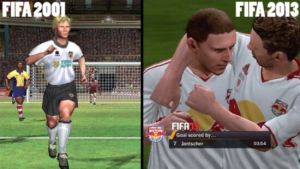
With the PS2, the dated aspect also gets its perfect test subject: FIFA. There has been a FIFA for every year, from 2001 until 2013. During that time, players switched from blocky hands to fingers; they received mouths and shirt creases that weren't just painted on, as well as getting lighting and additional effects. Each year, the new release made the previous one effectively obsolete. It's fascinating to think each year is a renewing the “wow” factor that immediately disappears in that franchise.
First Person Is The Worst Model
Going further with the zooming in model, first person view has had a rough timing trying to size up. It doesn't get closer than a personal camera angle, as this represents the players themselves. We're all aware of how the world around us looks like and for the longest time games didn't reflect that.
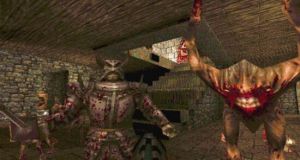
Still, when first-person shooters (FPS) like Wolfenstein and Doom first came out, there was just nothing like it. No other competitor allowed the player to be the person really in charge of acting inside the video game world. These might look stale now, but every progression in the FPS genre that is not the most recent pretty much falls in the “outdated” category and due to this extreme close up flaws are accentuated.
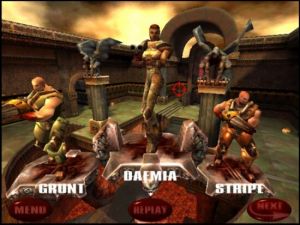
For example, before GoldenEye, the first Quake was a revelation; to have 3D models in a nightmarish environment, which now feel like triangles in a wood panel. Still, if we're honest, not even more recent Quake titles like the still popular Quake 3 can live up to modern shooters. Its few more curves and painted on faces won't make a difference We're already complaining that shooters from five years ago appear ridiculous now.
A Rapidly Increasing Standard
Where we currently stand, we can feel the bar of progress being lifted much faster. As titles push boundaries, the ones that did so previously don't appear as marvelous anymore. Blockbusters like the first Uncharted almost come off as cartoons, compared to the third iteration. Any lack of nuance in textures or effects now makes characters express themselves like puppets. Environments with the slightest amount of pixels in their surface resemble theatre decors at best.
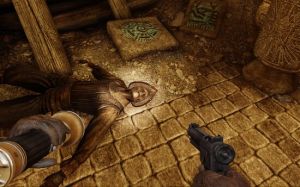
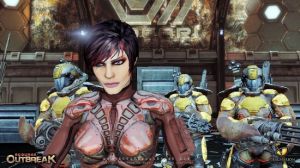
It's come to such degrees that we've played games this year that came out dated. Particularly, a glut of Unreal Engine 3 releases look 'off' in a way. This is an engine that is still standard and yet it fails to charm us as it once did. Games such as the recently revamped Scourge: Outbreak display unnaturally jittering characters with dead-eyed faces. Last year's Deadfall Adventures suffers the same fate with oddly bobbing heads and overly pale skin tones. Four years ago, their detailed presentation would still look amazing; now the current technology is not even pleasing to the eye.
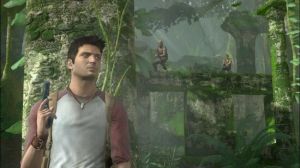
If current releases can already fall behind immediately, just imagine how we'll look back at major releases now that the new generation has begun.

Good article, except that I wish they had stayed with computer games, going from text and there one. There was some computer stuff, but most of it was console. Disappointing.
It brings a happy tear to my face to see Sucker Punch maturing from making a silly stealth game to full out open world game with a complex story. This is easily one of the best games for the PS4. I strongly recommend, no, demand that any seroius gamer who owns a Ps4 to buy this game. Believe me, its that awesome. cat mario online
Only great graphics matter
This article should more carefully separate graphics and design. A good example is MGS1, which sure it has old textures and low polycount, but it still looks really good due to having excellent design.
As for rapidly increasing standard in graphics, I'm skeptical about this also. The jump from PSX to PS2 was huge, and the jump from PS2 TO PS3 was also huge. Now the current gen games are routinely mistaken for last gen, this really shows how small the gap is between last and current gen.
I recently played the original Deus Ex and it quickly became one of my favorite games. Graphics barely matter to some of us.
I've grown up on every game system listed in this article. Within the past year I've beaten Adventure (for the first time) on my still working Atari 2600 and still play the occasional Enduro along with other games for the aforementioned systems based on nostalgia and for what games are for to escape the stress of the real world on occasion. The whole article is just an unnecessary dig at past generations of games based soley on their graphic capability, we already know that videogame technology is an ever evolving industry and didn't need the opinion of one person to be reminded of it.
This guy obviously lacks imagination. I wonder what this tool would think if he were to ever watch Back to the Future again.
Shutup
Graphics doesn't age well, but gameplay lives forever.
Indeed, I'm not complaining Quake 3 is 5 years old. Good we agree on that.
Definately a biased review. If you're talking ATARI level graphics then sure, it may seem comical due to the fact you can't even physically see what is happening some of the time lol. But MGS? I've happily replayed that game recently and still enjoyed it. Of course you're going to revel in new technology but it doesn't mean older generation goodies can't present their own 'wow' factor. Oh and also Quake 3 "5 years old?"... When was this article written 2004? Beta 1.05 version of Quake 3 was released in April 1999. Full game release 5 Dec 1999 (long time player here). So, no, you're not complaining about the GFX of a 5 year old game..... :P
Graphics of the past will always look dated, at least 3D wise. Some cell-shaded graphical games (Dragon Quest 8 and paper mario series) and very well drawn 2-D games (FF6, Super Mario Land, alot more) will always beautiful for what they are. However, graphics despite being very important, is not as important as game play and story. Early 3D games also suffer from the fact that our higher resolution tvs distort these games even more making the graphics look even worse than they did when we played on lower resolution tvs. Despite that playing a truly great outdated game (like Panzer Dragoon Saga or FF7) even with the outdated graphics is still a very enjoyable ride.
Being a collector with a massive console and game collection myself, I have to say that some of those old games STILL "wow" me, but in a different way. Retro gaming is hot and getting hotter every year. There is a reason for that.
Most 3d games did not look good until the ps2. But there have been great looking 2d games on snes and ps1. Even some games on nes still hold up like mike tyson's punch out!
The shirt creases on those FIFA players ARE still just painted on... LOL
Older games can still be great and fun to play, even with graphics that would never be allowed to pass in new games. Not long ago I scoured the internet until I cound one of my favorite old games, Odyssey, the Compleat Apventure. *spelling errors are part of the game's title* It's a game I played on my Grandma's Apple II all the time. Your character is a tiny stick man walking around a mostly empty world, but it's still cute.
I also now want to play Wizardry 8 some more after seeing some of the stuff here. The graphics may not be up to today's standards, but it's still a nice game. I really need to find the patience to finally beat it one of these days.
Nostalgia is terrible.. I tried to play some GTA VC and Star Wars Battlefront ll a while ago and I cried a bit..
Older games have a vintage sort of charm that makes me forgive any graphical shorcomings. I espesially love the PS1 era. Plus i think that restraints helped devs be creative.
It's not always about better graphics = better experience, mind you (though they certainly do help!). I'm still playing Half-Life 2 which is 10 years old this year, and it still beat a lot of today's FPS story and epicness-wise
Also, Minecraft says hello.
You really might want to fix that first image. Getting something as iconic as Adventure on the 2600 wrong really throws the rest of the article into question...
Technology never stops improving but as with old films that appear dated games are fondly remembered for the experience and joy they brought
PlayStation had awesome graphics in some games, this article did just take the wrong examples https://www.youtube.com/watch?v=5DxnxmJJAQg
I guess I am easy to please, because I've forgone buying a PS4 to play Nethack over and over. It's free, and my mind applies more roleplaying magic onto it than any amount of high-def wizards with physics'd beards.
What's life going to be like when we reach the ps10+. High definition in a vr sim with first person view. Think of the oculus rift + all of your senses, this would be amazing emulation. Sadly it's impossible with tech today. Touch can be emulated to a degree. Smell cannot be. Taste is another thing hard to work with. So this leaves us with sight and hearing to work with on game emulation engines at the moment.
" If a person acts realer, it needs to look realer and that, by today's standard, has changed drastically."
Really?
Adventure on VCS2600 did not look like that!
This looks like a slightly enhanced version. The graphics are incorrect and there was no room with that layout.
And yes, I bought it on release and played it hundreds of times
I can play games with worse graphics than Metal Gear Solid or Tekkenand still enjoy them.
I grew up in the Odyssey 2 / Atari 2600 Era. Played those games into the night like the kids do today with modern systems. Its what we had... and it was amazing stuff... for then.
I remember the F18 Flight Sim on my Amiga computer (1986 tech) which was SO REAL and fluid! Well, it was compared to my 8bit C-64 flight games.
Then, I remember JSF which was AMAZING for 1999... rolling hills, trees, lighting... HAWX is the last FLight game I've played. Been buzy.
The ultimate game effects will be VR that looks 100% real... even if its dragons, race cars and Mario type enviroment.
Quake is still one of the best damn FPSes I've played. To critize games over their graphics seems a little shallow. But It's also the first draw a lot of people buy into. "look how shiny!" But honestly, I find a lot of older 3d models are better then their followers. They were simple basic models, not misshapen attempts at looking like people.
Graphics just can't stand up to gameplay, and many gamers will tell you that graphics hardly matter if the gameplay sucks.
There are three games from PS2 I still love. Red Faction 2, James Bond Nightfire and LoTR RoTK. Some games, graphics do apply to, but others, if the game mechanics are sufficient, can still provide entertainment.